
The focal point
The highest density of light-detecting photoreceptors can be found in a 5-millimetre patch of the retina called the macula. This ultra-sensitive cluster of rods and cones captures the central part of our visual field, and is responsible for filling in the fine details of the objects we see. The progressive loss of cells in the macula in AMD causes vision to become gradually impaired, leading to blindness.
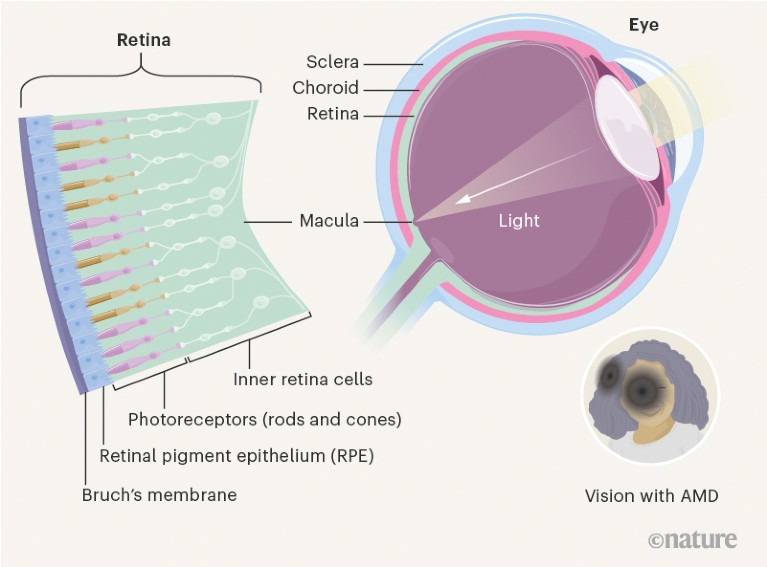
Infographic: Lucy Reading-Ikkanda
An ever-growing problem
a, The prevalence of advanced AMD increases with age. b, Those affected can have one of two forms of the disease, known as dry AMD and wet AMD, which occur at different rates in different populations. c, The availability of treatments for wet AMD has reduced the prevalence of advanced AMD, but a steadily growing population of older people worldwide means that overall numbers are continuing to climb.
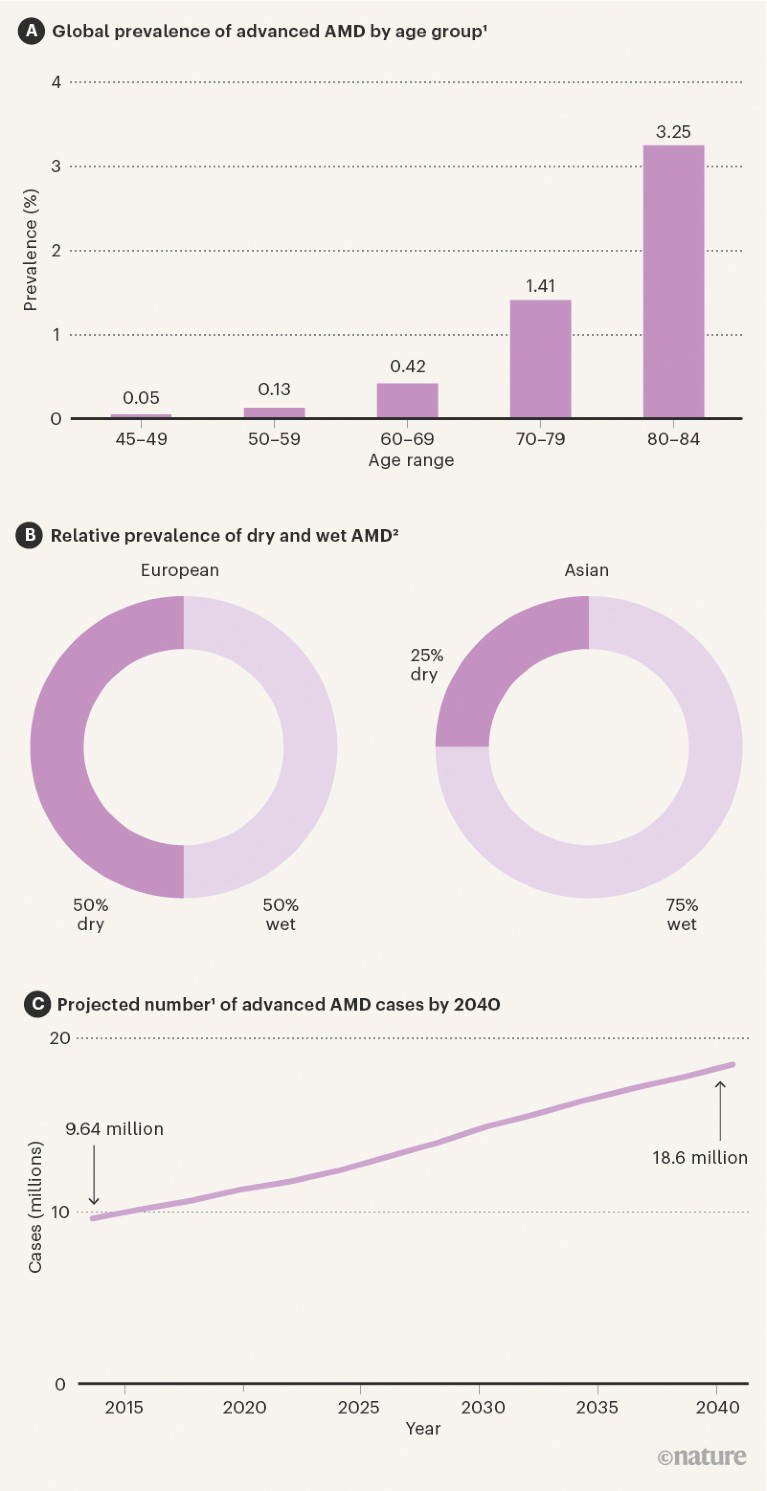
Infographic: Lucy Reading-Ikkanda
An eroding ecosystem
Wet and dry AMD begin in similar ways, but the pathologies of these two conditions ultimately diverge.
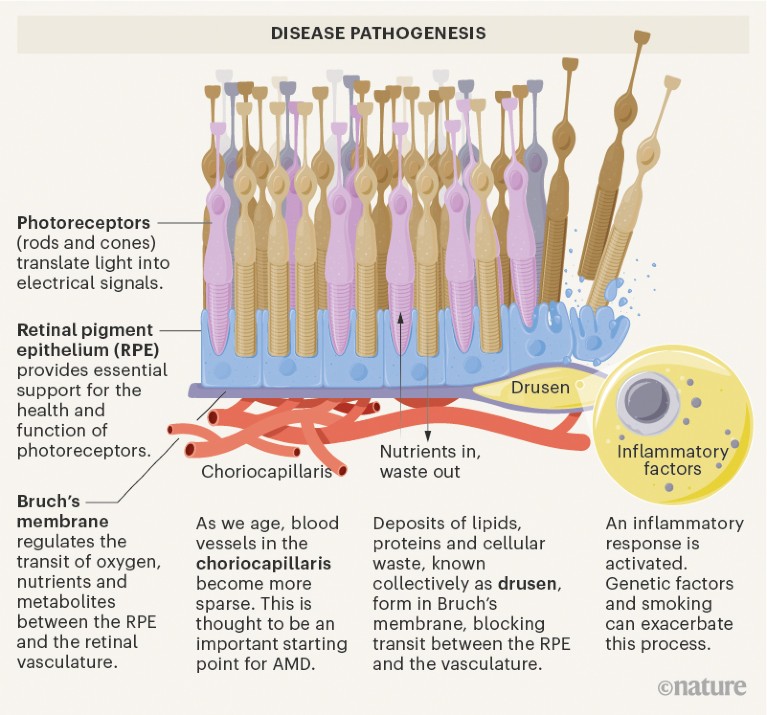
Infographic: Lucy Reading-Ikkanda
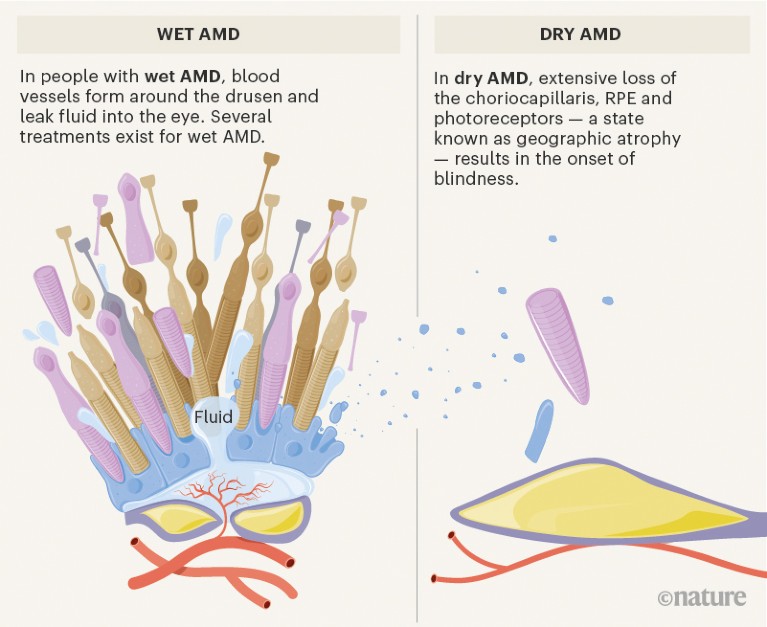
Infographic: Lucy Reading-Ikkanda
How to restore a ravaged retina
People with dry AMD currently have no effective treatment options to restore lost vision or prevent its decline. But insights into the molecular and cellular pathology of this condition have guided the development of several promising avenues for intervention. These treatments are all still undergoing testing in clinical trials, but have shown some potential to slow or halt dry-AMD progression.
Ending immune attack
The complement system is a complex signalling cascade that ramps up the immune response to infection or injury. Mounting evidence3 links one arm of this system — the ‘alternative pathway’ — to AMD. Some treatments4 target the hub of the complement system, the C3 protein, whereas others aim at less-pivotal factors that could achieve more specific effects.
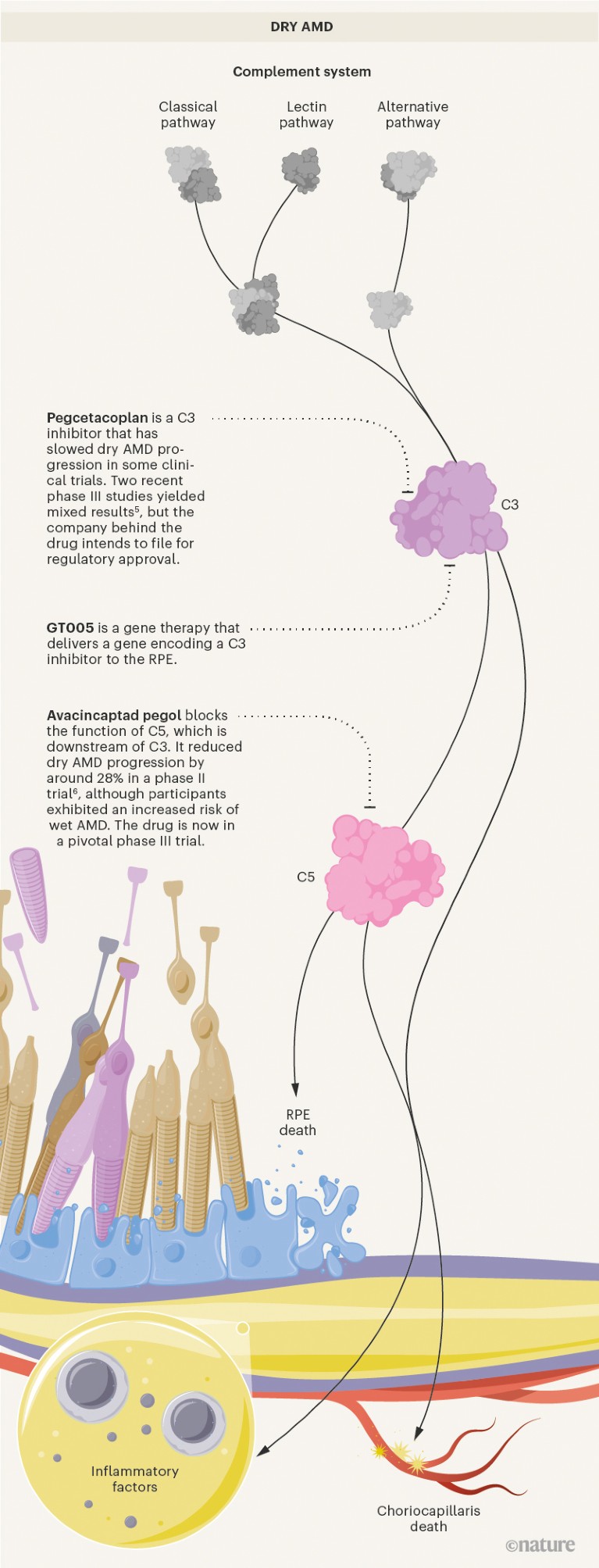
Infographic: Lucy Reading-Ikkanda
Rebuilding a community
By coaxing embryonic stem cells (ESCs) to develop into healthy RPE cells, researchers can potentially bolster the health of retinal tissue that would otherwise succumb to geographic atrophy.
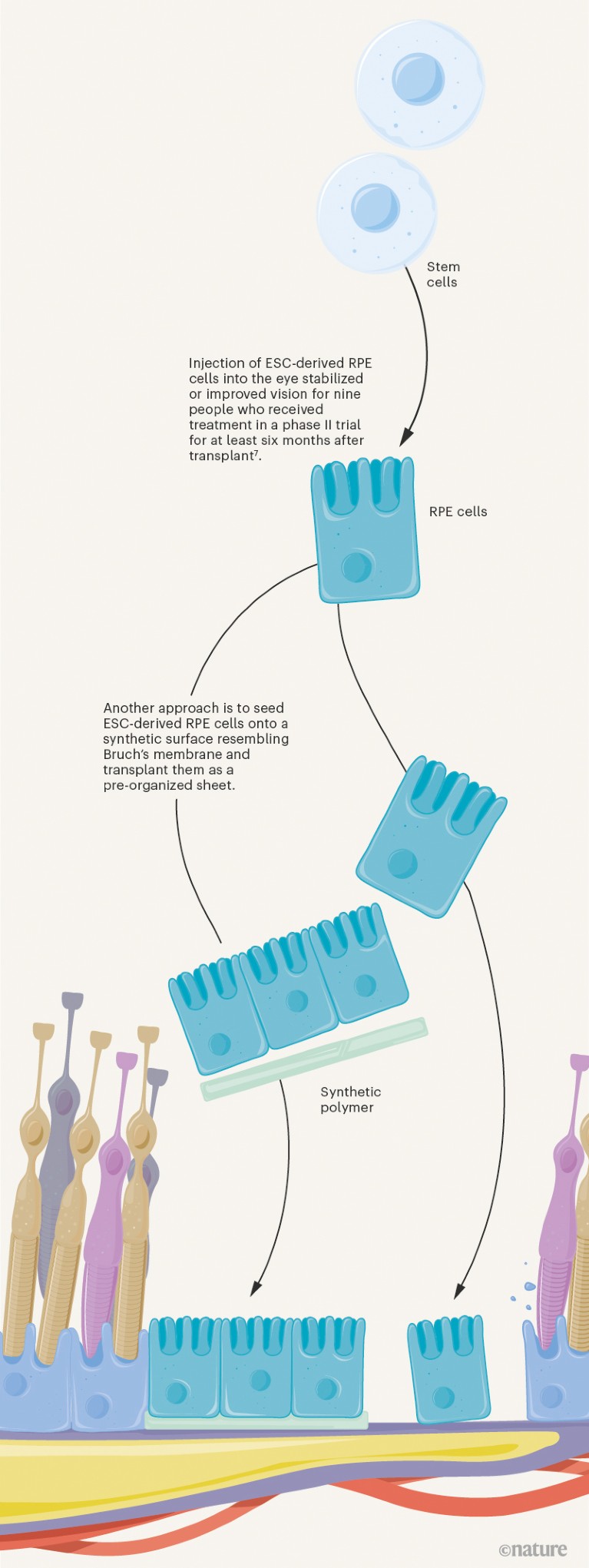
Infographic: Lucy Reading-Ikkanda
Bolstering the survivors
Several other therapeutic strategies now in clinical testing for dry AMD focus on reducing the accumulation of toxic metabolites or otherwise preserving the health and robustness of retinal cells.

Infographic: Lucy Reading-Ikkanda

 The quest to treat dry age-related macular degeneration
The quest to treat dry age-related macular degeneration
 Video: Rebuilding a retina
Video: Rebuilding a retina








